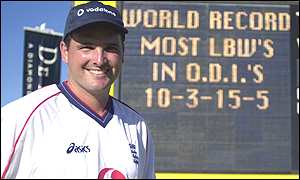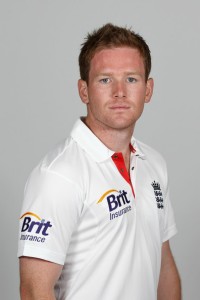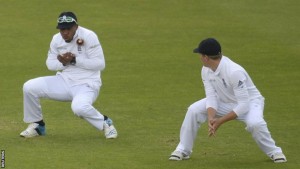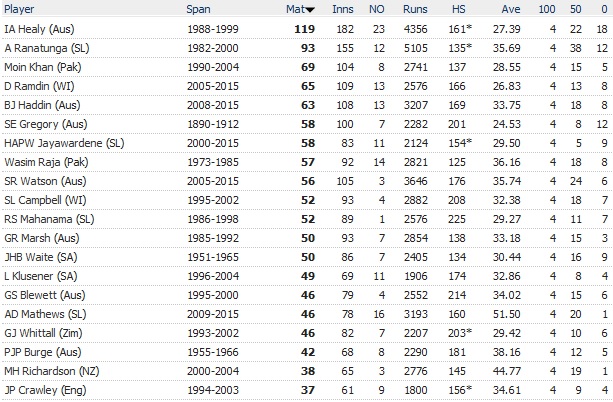
A gradual but inevitable descent into cricket-based loathing and bile.
Bits and Pieces
What is the perfect Test team? Obviously we all dream of a team of Steve Smiths, but realistically, that’s never going to happen, unless the former British high jumper, the head of planning at Blaenau Gwent County Borough Council and eight other Steve Smiths join forces with the Australian scamp. Therefore we have to look elsewhere.
It is reasonable to think that most cricket fans would consider the following an ideal setup:
- a left-hand / right-hand opening pair that combines a solid rock with an aggressor;
- three batsmen, including a no. 3 who can adapt to different situations, a no.4 who dominates and a no. 5 who compliments those above him;
- an all-rounder worthy of being selected for both batting and bowling;
- a wicket-keeper who can change the course of an innings; and
- four bowlers, including a world-class spinner, two opening pacemen and a third seamer who bowls tight or offers something different (if the five-man attack includes raw pace and a left-armer, so much the better)
Few teams have managed this. Of course the West Indies in the 1980s were officially quite good, but limited spin options counts against them (albeit offset by having an arsenal of fast bowlers) from being described as perfect. Apparently Australia weren’t bad in 1948. And they were also quite good from the mid-90s to the late 00s. But generally teams have to make do with the resources available, which means balancing different options and finding the best alternative.
In our lifetimes, England have certainly never managed a perfect team. Undoubtedly the 2005 and 2011 vintages were fine teams, but they did have a few weaker links. Moreover, irrespective of success, just about every England team that has taken to the field has featured a hybrid black sheep / runt of the litter – a player seen as far weaker than the rest or who is a figure of fun, whether tragicomedy or just plain hatred. Since the 2005 Ashes, the list of such persons includes Ian Bell, Steve Harmison, Ryan Sidebottom, Monty Panesar, Tim Bresnan, Boyd Rankin and other fall guys.
This meandering introduction leads us to the current England team. If England were picking plainly their six best batsmen and four best bowlers, who would be playing? Well that’s not going to happen – after all it is a team game and finding a balance is essential – and the current shift is towards players who can do a bit of everything.
We once were members of some kind of Lego Club, as part of which we were sent a regular magazine entitled Bricks and Pieces. It was such a shame when we cancelled last year. It would be no surprise if the England cricket team had a magazine in the 1990s called Bits and Pieces – for the team would regular be filled by players who weren’t ever quite good enough to be classed as all-rounders, but who could “do a job” with bat or with ball. The job description patently being “must be quite shit.” See our never-ending list of Unlikely Lads for many examples.
So what of now? This England team incorporates in Joe Root a batsman who can bowl decent if occasional off-spin, plus Moeen Ali whose Test career so far has arguably been more notable for his bowling than his batting. Ben Stokes is obviously earmarked as an all-rounder, albeit one who is not likely to be selected for his bowling alone. Would he be selected if he couldn’t bowl at all? Based on last year’s form, no, but a good first Test at St John’s has at least shown his potential worth to the side. With Jos Buttler ostensibly a batsman/keeper rather than old-fashioned gloveman, that is four men fulfilling more than one role. Should Adil Rashid ever actually get picked, then that makes it potentially five – and that ignores Chris Jordan as specialist fielder.
Should this sound all too much like England in the 90s, fear not. These players definitely don’t represent a fifteen year long search for a New Botham, rather are players who have grown up in the T20 era where it makes sense, from a purely selfish perspective, to have two strings to your bow given the shortness of the innings. And it is not just England. Players like JP Duminy, James Faulkner, Ravi Ashwin, Jason Holder, Kane Williamson (when not being banned) and Angelo Mathews are a new generation of all-rounders incomparable to Imran Khan, Kapil Dev, Mike Proctor or Richard Hadlee, but ones that to some extent (a lesser extent in Duminy’s case) will be integral to their respective team’s success.
Therefore, England should embrace the new. Yes there are significant concerns about the openers and growing concerns about how they will take 20 wickets in less than optimum conditions, but with Ballance and Bell looking settled at 3 and 4, England could create a middle order for the current era with Stokes, Buttler, Ali, Rashid and also Chris Woakes padding out the options. It might not result in an all-time great team, but in an age where there are few English players capable of being described as world-class, this sharing of responsibilities should be the way forward.
The strangest thing of all? We’ve written 900 words about all-rounders and not yet slagged off Shane Watson.





2 Comments
Post a Comment
1
Brian
01 May 2015 09:29
On the subject of which horse to back:
How about a young, blonde bloke, horrendously misidentified by the selectors as the new leg spinning option, whilst actually being a pretty fine top order batsman, albeit with an unorthodox technique. Has the magic ability to take wickets with rank bad balls. If only we knew whether he could wear a hat?
Step forward, Scott George Borthwick.
2
Jammay
22 Apr 2015 12:19
Watto with a ton every 2.5 years! At that rate it would take over 50 years for him to get more hundreds than Cook.